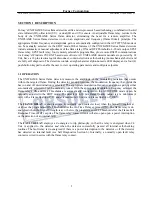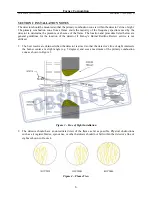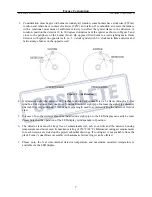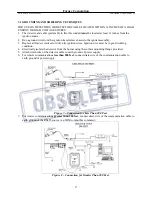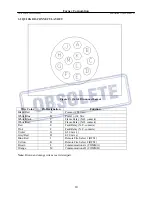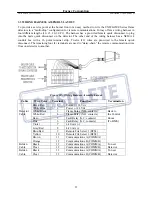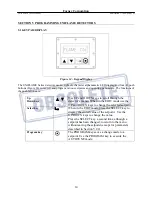
Forney Corporation
UNIFLAME User’s Manual
Publication 372000-48 Rev H
SECTION 1 DESCRIPTION
Forney’s UNIFLAME Series flame detectors utilize micro-processor based technology combined with solid
state infrared (IR), ultraviolet (UV), or dual (IR and UV) sensors. An adjustable flame relay resides in the
body of the UNIFLAME Series flame detector, eliminating the need for a remote amplifier. The
UNIFLAME Series flame detectors work on an amplitude and frequency (flame flicker) principle. The
appropriate flicker frequency and amplitude gain is automatically configured in the AUTOTUNE mode or
can be manually selected via the EDIT mode. Other features of the UNIFLAME Series flame detectors
include automatic or manual adjustment of the flame relay ON and OFF Thresholds, 4-20 mA output, SPST
flame relay, SPST fault relay, four remotely selectable program files, plus remote RS485 communications
via Forney’s Windows 95/98/NT based user software. All UNIFLAME detector models are powered by 24
Vdc, have a 12 pin electrical quick disconnect, contain electronic self-checking (no mechanical shutter) and
are fully self diagnostic. The detectors contain an eight-character alpha-numeric LED display and a four (4)
push-button keypad to enable the user to view operating parameters and configure setpoints.
1.1 OPERATION
The UNIFLAME Series flame detectors measure the amplitude of the modulating radiation that occurs
within the targeted flame. During the detector set-up procedure, the modulation frequency that yields the
best on and off discrimination is selected. The appropriate modulation frequency and sensor gain is either
automatically selected or can be manually tuned. With the appropriate modulation frequency selected, the
flame relay’s ON and OFF Thresholds are automatically configured in the AUTOTUNE mode or can be
manually adjusted in the EDIT mode. The detector’s 4-20 mA Flame Quality output is at a minimum (4
mA) with a Flame Quality of “0”, and at a maximum (20 mA) at a Flame Quality of “100”.
The
FLAME RELAY
is energized (and its normally open contacts close) when the Signal Strength is at
or above the programmed ON Threshold after the On Time Delay expires (OTD). The flame relay is de-
energized when the Signal Strength is at or below the programmed OFF Threshold after the Flame Fail
Response Time (FFRT) expires. The flame relay contact circuit will also open upon a power interruption
or the detection of an internal fault.
The
FAULT RELAY
employs a de-energize to trip philosophy, in that the relay is energized when 24
Vdc is applied to the detector
and
when the detector successfully passed all internal self-checking
routines. The fault relay is de-energized if there is a power interruption to the detector
or
if the detector
has detected an internal fault (see Self Diagnostics Section 6). Internally, a normally open fault relay
contact is wired in series with the flame relay contact.
1





